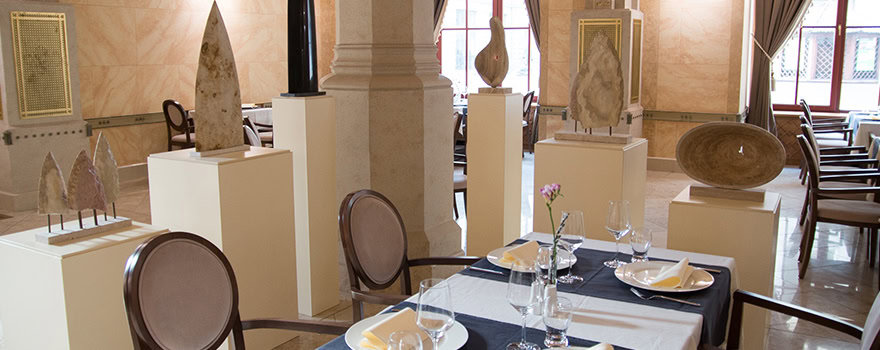In May 2016, Pesti Vigadó Restaurant launched its á’la carte division to the general public. Not only the elegant historical venue but also the served dishes in line with the so-called cuisine of Pest, a cuisine traditional in Pest side of Budapest (Pest cuisine for short) are intended to attract native gourmets in here.
“It was a long way to define the gastronomic style, which fits to such a great building like Pesti Vigadó”, said László Szabó, restaurant manager at the opening event. It offered a place to the Gentles to participate in monumental balls and ceremonial gatherings form the 19th century here. In 1873, this building hosted officially the unification of the three individual cities, Pest Buda and Óbuda, this is where basically Budapest established, and likely it was the place where Ferenc Liszt, the famous composer, pianist and conductor appeared most frequently.

The Pest cuisine, as an important part of the Hungarian cuisine, it is basically an autonomous urban Hungarian bourgeois cuisine having been developed in the 19th century, historically strongly enriched by the elements of Turkish, Italian, Austrian and French cuisines, as well as the regional rural cuisine of the Great Plain. Thanks to all these international influences, it became fully-fledged and unique by the end of the 1920s, and still being continuously changed nowadays as well. The Pest cuisine, based on the fusion-like culinary traditions of Austro-Hungarian Empire, is the pendant of the Viennese cuisine, and the mix of the unique cuisine and gastronomic culture of the Hungarian capital – summarises gastronomy writer Sándor Csíki.

The restaurant serving catering of the events in the rooms of the Vigadó as well, can also be visited by the general public from April this year, and awaits its guests with new menu cards in each season. Those are interested in Pest cuisine can taste here dishes like Palóc soup (which is, surprisingly, a real traditional Pest-originated dish), double-egg noodles served together with chicken-paprika (here unexpectedly no water added to the dough, only eggs), spring-style Hungarian French salad (mayonnaise salad made of peas, carrots and potato), or cottage cheese dumplings sprinkled with honey cake-crumble.






